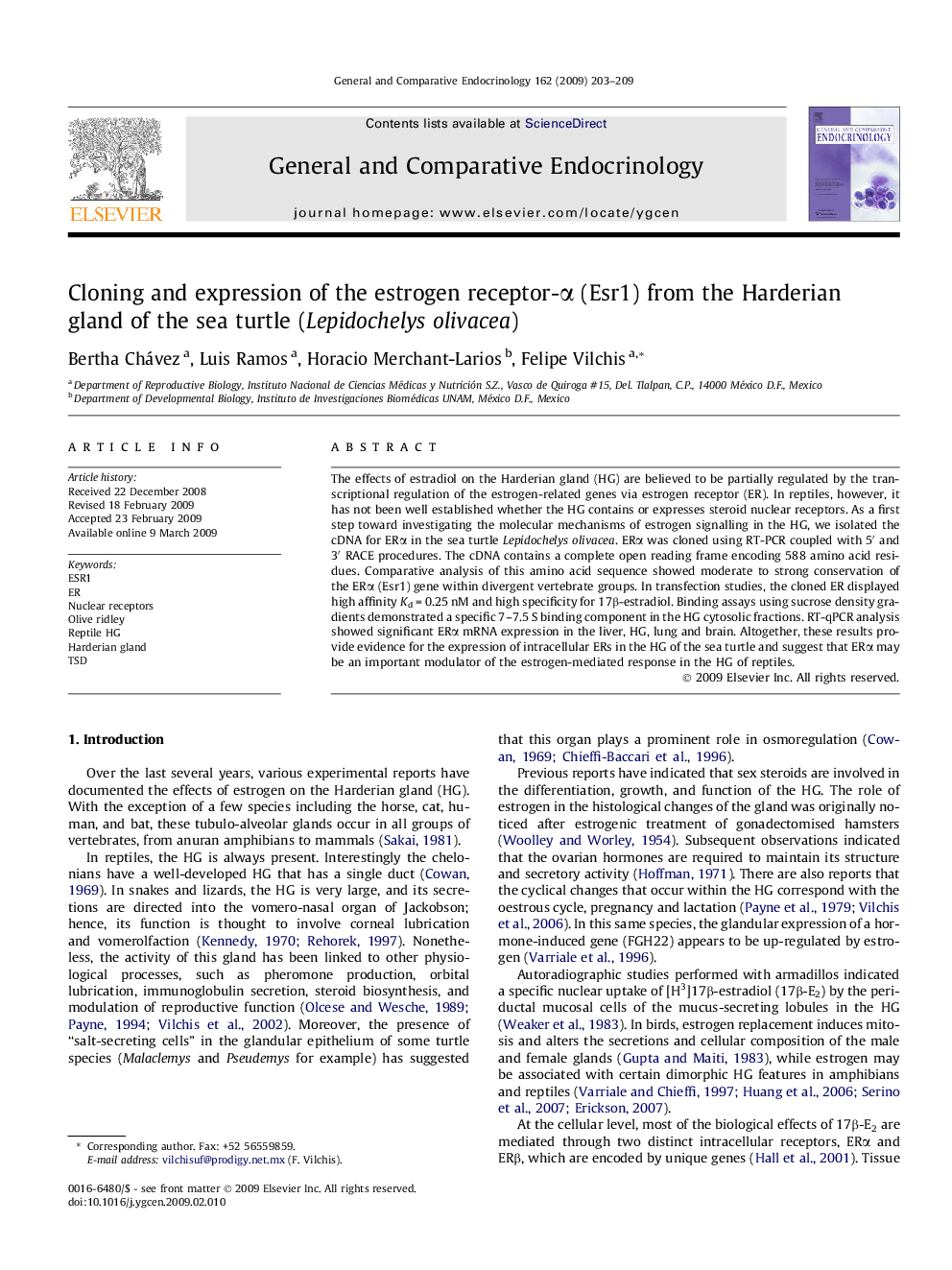| Article ID | Journal | Published Year | Pages | File Type |
|---|---|---|---|---|
| 5901746 | General and Comparative Endocrinology | 2009 | 7 Pages |
Abstract
The effects of estradiol on the Harderian gland (HG) are believed to be partially regulated by the transcriptional regulation of the estrogen-related genes via estrogen receptor (ER). In reptiles, however, it has not been well established whether the HG contains or expresses steroid nuclear receptors. As a first step toward investigating the molecular mechanisms of estrogen signalling in the HG, we isolated the cDNA for ERα in the sea turtle Lepidochelys olivacea. ERα was cloned using RT-PCR coupled with 5Ⲡand 3ⲠRACE procedures. The cDNA contains a complete open reading frame encoding 588 amino acid residues. Comparative analysis of this amino acid sequence showed moderate to strong conservation of the ERα (Esr1) gene within divergent vertebrate groups. In transfection studies, the cloned ER displayed high affinity Kd = 0.25 nM and high specificity for 17β-estradiol. Binding assays using sucrose density gradients demonstrated a specific 7-7.5 S binding component in the HG cytosolic fractions. RT-qPCR analysis showed significant ERα mRNA expression in the liver, HG, lung and brain. Altogether, these results provide evidence for the expression of intracellular ERs in the HG of the sea turtle and suggest that ERα may be an important modulator of the estrogen-mediated response in the HG of reptiles.
Related Topics
Life Sciences
Biochemistry, Genetics and Molecular Biology
Endocrinology
Authors
Bertha Chávez, Luis Ramos, Horacio Merchant-Larios, Felipe Vilchis,
